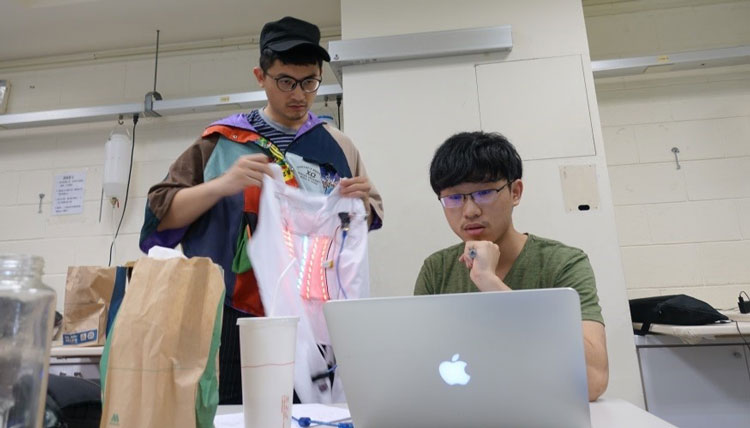Connected sportswear and u-blox
It’s not quite a natural combination bringing together electronics and sportswear. First of all the materials are very different, you have hard, rigid and fragile electronics compared to the soft, flexible, robust and washable textiles. However, bringing the two together opens up a world of new possibilities and innovations, as a team of Fashion Design students from Shih Chien University, Taiwan found out when they recently attended a ten day workshop on electronic sportswear.
The master students were initially given the task of observing and engaging with sports participants to understand their routines, how they practice, what keeps them motivated, and to measure their performance. Based on these observations the students generated ideas for electronic sportswear that could support the sports participants.
The ideas were then brought to the workshop where the fashion designers worked with a team of electronic graduates from neighbouring National Taiwan University, to bring their ideas to life. The two sets of students come from very different domains, and this pushed all of them beyond their comfort zones. For example, they have little technical vocabulary in common, with engineers using terms such as op amp, power supply and microcontroller, and designers talking about cut, drape and tuck.
So the early part of the workshop focused on getting the fashion designer and engineer communicating and starting to think about how to practically realise their ideas.
By the second half of the workshop, the ideas were starting to take shape in the form of prototypes. A few examples are: a jacket that gives feedback on posture and arm stability for Olympic target shooting, a basketball top that celebrates when the wearer makes a basket, shoes that measure cycling cadence and foot position, and a dancer’s top with feedback on arm position.
Although not planned, a common theme emerged from these many projects: connected sportswear. For this generation, it seems natural to have their garments connected to a smartphone. Using Bluetooth low energy, many of the sportswear items could be configured through a simple app on a phone, for example, setting a pace for a cycle socks or initiating a celebratory LED light sequence on a basketball top when three points are scored. The apps could also receive and display data from the garments using Bluetooth low energy, for example to give feedback on the correctness of a posture for dancing or the height jumped by a player.

Early prototype of a top that provides feedback on posture through LED's

Some serious debugging under way
As the workshop is an integrated part of the master programme at Shih Chien University, the students presented their work on the final day to three examiners. It was a bit stressful when some last minute repairs to broken wires was required. However all managed working prototypes and good presentations.
With the tension of the exam over, we had time to discuss the wider ideas of clothes that change from being passive items to active ones that provide feedback to a wearer to make sports or other activities more effective or just more fun. This change is surely coming as sensors, microprocessors and wireless communication devices become smaller, more energy efficient and integrated.
It would be nice to see teenage clothes that send messages to their owner’s phone when left on the floor of the bedroom, reminding them to put them away. ‘Clothes that complain’ could be a new facet of the Internet of Things (IoT)!
The workshop was supported by u‑blox to broaden the understanding of electronics and their potential value in creating new and innovative future products.
Guest blog by Paul Gough, Principal Corporate Strategy, u-blox.
Courtesy of u-blox.











